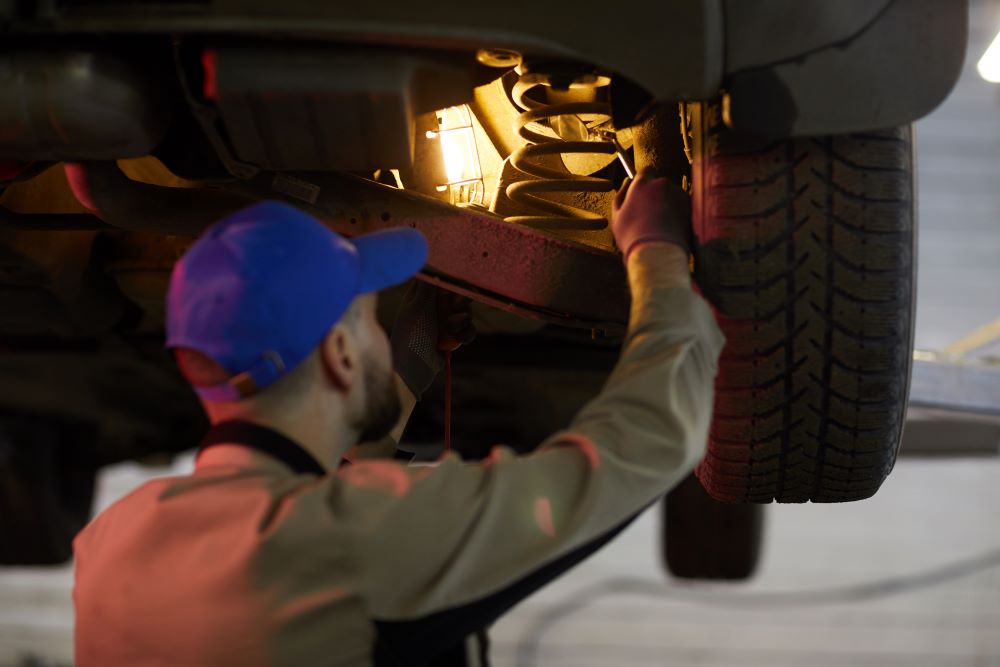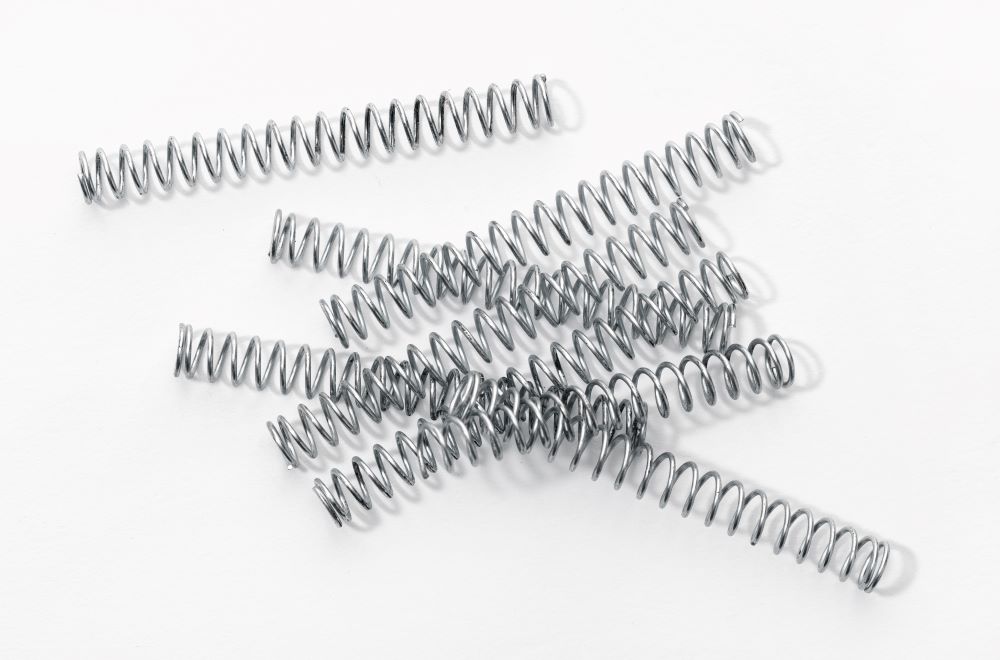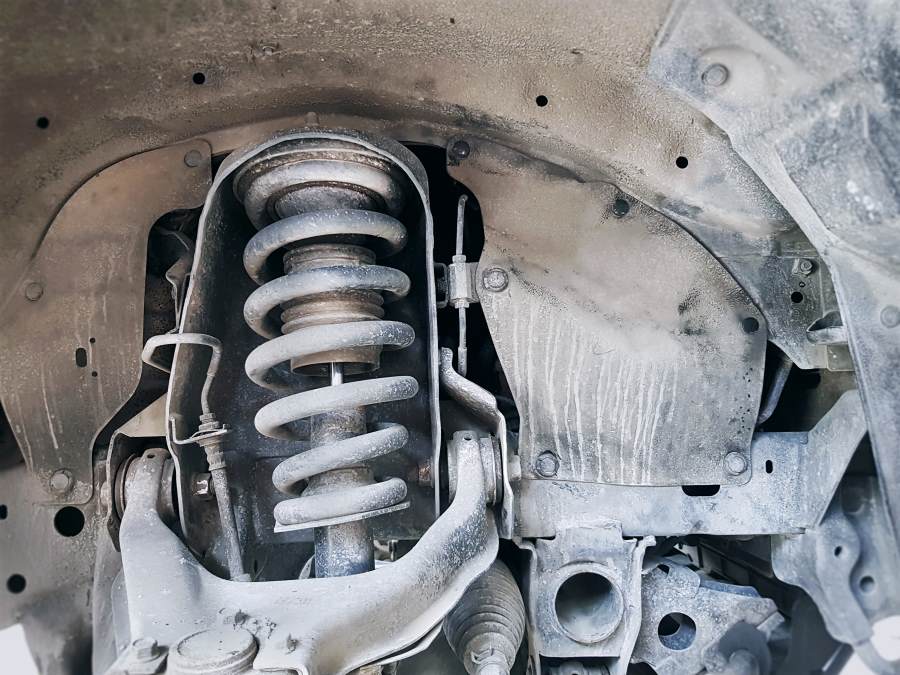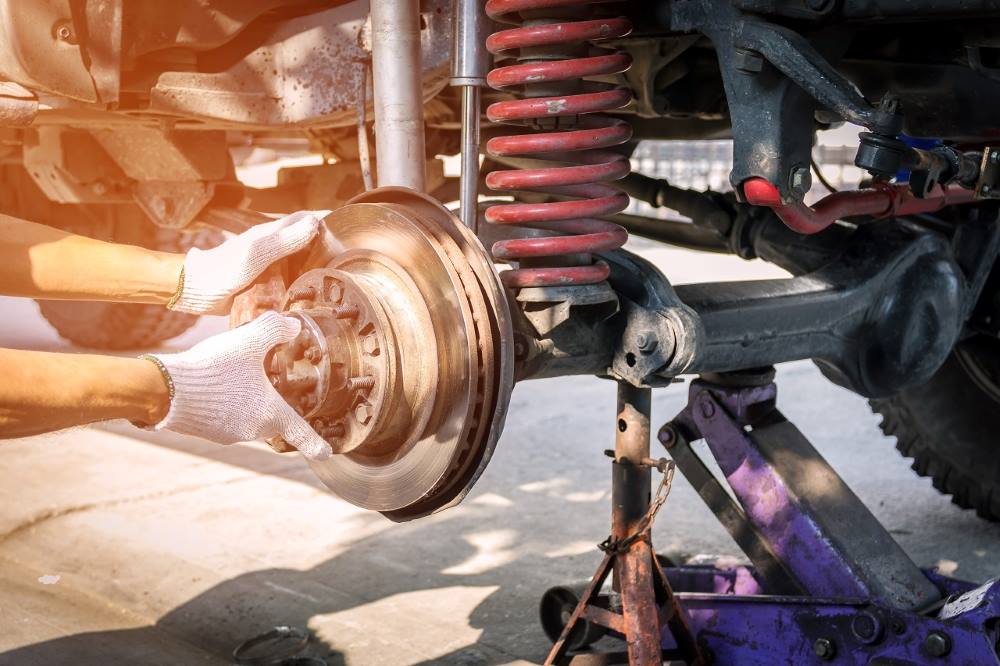9000+ Cashless
Network Garages
96% Claim
Settlement (FY23-24)
24*7 Claims
Support
Click here for new car
I agree to the Terms & Conditions
9000+ Cashless
Network Garages
96% Claim
Settlement (FY23-24)
24*7 Claims
Support
Click here for new car
I agree to the Terms & Conditions

One of the most complicated works of engineering is a motor vehicle, and the proper synchronisation of multiple elements is mandatory for its effective performance. Among others, a coil spring is an important part of manufacturing vehicles. These are mainly used for storing mechanical potential energy.
A coil spring is a helical-shaped mechanical device which can be either close-wound or open-wound. It is a major requirement when it comes to manufacturing vehicles. Usually made of elastic materials orhardened steel, these coils are useful for storing mechanical energy.
This spring is a major component in the suspension system of vehicles, which can affect both the driver’s control over the vehicle and the comfort of the occupants.
In simple terms, a coil spring is a spiral of resilient steel rods. The vertical movements of the car wheels can either stretch or compress it. The spring helps to absorb the deflection caused by the road shocks instead of passing it on to the passengers, maintaining their comfort while riding.
Now that you have a basic understanding of a coil spring, it will be better to dive into some of its deeper details. Here are the different types of coil springs you should be aware of:

As the name suggests, these are helical wound coils wrapped together to create tension. The design of such coils aims at resisting stretching. Usually, they come with hooks, loops, or end coils. These are then pulled out and formed at each end of the body for attachment.

These are open-coil helical springs. The main purpose of their design or construction is to prevent compression along the axis of wind. They are capable of working independently. However, in most cases, they are assembled over a guide rod. This type of spring is commonly used in car suspension. Here are the two types of compression springs available:
Volute Springs: These are commonly used as heavy load compression springs. The design includes rolling a strip of the plate into shapes of both helix and spiral.
Arc Springs: Also known as bow springs, these were originally used in internal combustion engine drive trains. The ends of the spring are used for applying the force.

These are flat spiral coils, sometimes helical-shaped springs. Commonly, people use these for storing rotational energy or applying torque. They do not need a linear force for push or pull like other springs. Rather, they are capable of storing and releasing rotational energy. For this, such springs use torque as a measure of force.
In simple terms, a coil spring has the role of storing energy to release it later. Moreover, it is also effective in absorbing the shock or maintaining the right force between two surfaces.
Here, it is important to keep in mind that applying excessive force stretches a spring beyond its limits, thereby distorting it permanently.
These are tightly wound springs with no pitch between the coils. As you apply force, these springs extend, and coils are pulled apart. Once you stop applying the force, these springs release mechanical energy while snapping back to their original positions.
They are an ideal choice if you need to move objects back to their original positions. Commonly, they are used in garage doors, moving these within the pulley system.
As such, springs store mechanical energy through compression, they hold weight and shrink in size after receiving the force. Once you remove the force, the spring expands again and releases the stored mechanical energy.
The pitch of this spring gets smaller when it is compressed and starts storing mechanical energy. The process continues till it expands to its original size again.
Such springs twist to transfer mechanical energy. Just like a door handle, such springs snap back to their original position after you twist them to open. These springs, therefore, can offer energy when twisted.
These springs are again common components of garage doors, as they can contribute effectively to the counterbalance system of such doors. They offer the right resistance required to keep the door open or close.

Now that you know how coil springs work, it will be necessary to understand the right ways to maintain them. Coil springs can be an essential part of the car suspension system. They appear on each wheel and absorb the impact of the road to ensure a smooth riding experience. Coil springs can be vulnerable to breakage as they are constantly exposed to road impact.
Here are a few common reasons that can cause car coil springs to break:
Various road debris can cause your vehicle to provide an uneven driving experience. For instance, mud, twigs, stones and leaves on the road can lead to a lack of balance of the wheels or blown tyres.
As a result, one of your car wheels might be taking more impact than the other one. This means the coil springs need to work harder to compensate for the lack of performance. If the issue persists, the coil spring is likely to break.
One of the most common reasons for the breakage of a coil spring is corrosion. Usually, these springs come with a plastic coating, which protects the metal from wearing out.
However, with constant expansion and compression, this plastic coating splits, exposing the delicate metal to adverse road conditions. Rain or snow on the road can easily cause the coil spring to break.
At times, you may find fluid leaking from the hydraulics of your vehicle, such as the shock absorbers. This simply represents that the vehicle parts are not working properly. With a decline in the hydraulic pressure, there is increased pressure on the coil springs and suspension of your vehicle, causing its breakage. This leads to damage in the brake lines and also in the exhaust system at times.
It is important to seek solutions if your vehicle has broken coil springs. For that, you should be able to identify if they are broken. Here are a few signs you can notice if your vehicle’s coil springs break:
Uneven Wheel Corners: The corners of a vehicle will indicate if the coil springs have broken. If one of the corners feels lower or higher than the other, measure it to check if there is a substantial difference. Broken coil springs can cause such differences.
Weird Noises: Broken coil springs can cause unusual and weird sounds within the vehicle. Whenever you drive over uneven surfaces, you will hear a clunking or knocking noise, which indicates a broken coil spring.
Braking Distance: The friction between the tyres and the road reduces with the corroding coil springs of a vehicle. It leads to increased exposure to road impact.
Excessive Bouncing: With a broken coil spring, the components in your vehicle’s suspension are likely to hit each other. This results in excessive bouncing and swaying.
Now that you have a clear idea of what causes car coil spring to break, here are a few tips you can follow to prevent it from breaking for a longer term:
Make it a habit to constantly check and monitor the tyres and their overall conditions. This helps to avoid the possibility of imposing extra pressure on the coil springs. As a result, they stay in good condition for a long time.
As you are probably aware, overloading the vehicle causes pressure on its various parts while reducing its fuel consumption. Avoiding overloading can therefore prevent your coil springs from corroding and snapping.
Rash driving over potholes and poor road conditions can again pressurise the coil springs. Thus, being more careful and avoiding such road conditions can help you prevent breakage of the coil springs for a longer time.
Vehicles are exposed to various road debris, dirt or ice regularly. Cleaning it regularly, especially the underneath portion, keeps your vehicle clean. As a result, the coil springs stay in the right shape and function effectively.
Over the years, coil springs have been refined and advanced. As a result, the scope of its applications has increased rapidly. Currently, people apply it in different products, some of which are as follows:
Vehicles and automobile products
Clocks
Toasters
Gates
Garage doors
Door handles
Retractable pens
Hopefully, that gives you a detailed idea about coil springs in vehicles and their importance for a smooth driving experience. As this article pointed out, it is a major component of a vehicle. Thus, make sure to check its condition and seek help if it seems broken or corroded. You can also follow the tips mentioned in this article to avoid such conditions.